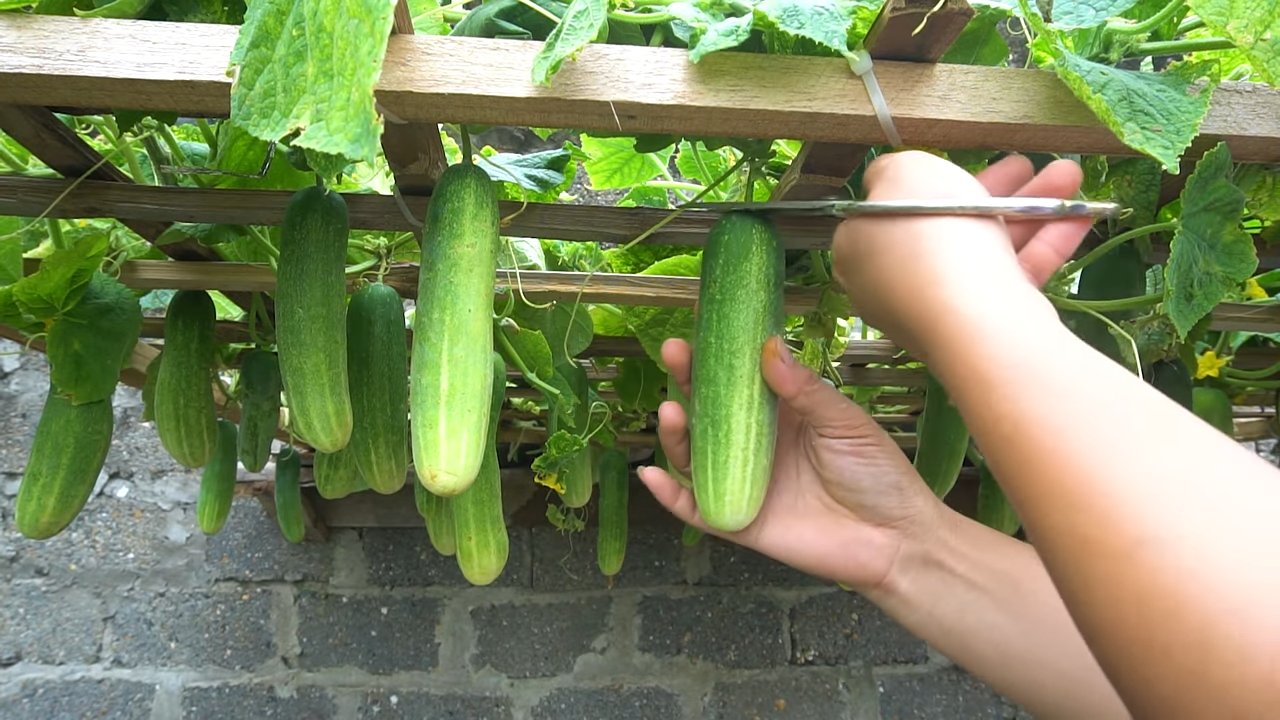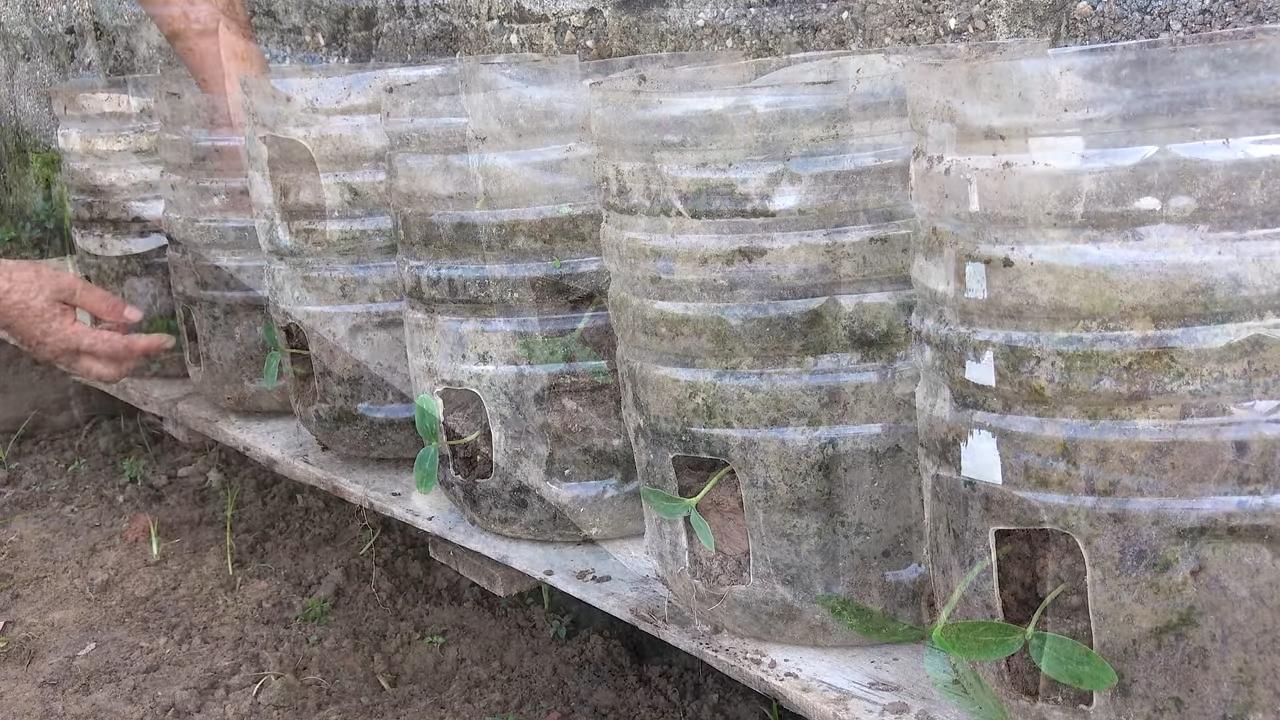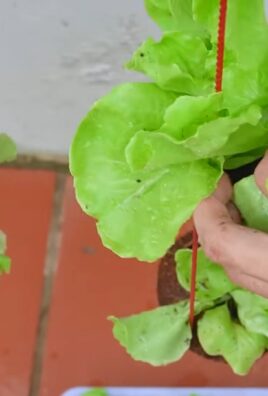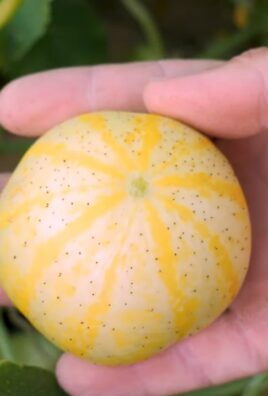Cucumber harvesting tips are essential for any home gardener dreaming of crisp, refreshing salads and tangy pickles straight from their backyard! Have you ever envisioned yourself strolling through your garden, basket in hand, overflowing with perfectly ripe cucumbers? It’s a truly rewarding experience, but knowing when and how to harvest them correctly is key to unlocking that dream.
Cucumbers have a rich history, dating back thousands of years to their origins in India. They’ve been cultivated and enjoyed across cultures, from ancient Rome to modern-day kitchens. But let’s face it, sometimes our homegrown cucumbers can end up bitter, oversized, or just plain disappointing. That’s where these DIY cucumber harvesting tips come in!
I’m here to share my tried-and-true secrets to ensure you get the most delicious and abundant cucumber harvest possible. We’ll cover everything from identifying the perfect ripeness to the best harvesting techniques, preventing common problems like yellowing or misshapen fruits. With these simple yet effective cucumber harvesting tips, you’ll be well on your way to enjoying a bumper crop of flavorful cucumbers all season long. Let’s get started and transform your cucumber patch into a source of pride and deliciousness!

DIY: Maximizing Your Cucumber Harvest – From Garden to Table!
Hey fellow gardeners! I’m so excited to share my tried-and-true methods for getting the most amazing cucumber harvest possible. I’ve spent years experimenting, and I’ve finally nailed down a system that works wonders. Get ready to be swimming in cucumbers!
Understanding Cucumber Needs: The Foundation for a Bountiful Harvest
Before we dive into the nitty-gritty, let’s quickly cover what cucumbers need to thrive. This knowledge is crucial for understanding why we’re doing what we’re doing.
* Sunlight: Cucumbers are sun-worshippers! They need at least 6-8 hours of direct sunlight per day.
* Water: Consistent moisture is key. Cucumbers are about 95% water, so they need plenty of it, especially during fruiting.
* Soil: Well-draining, fertile soil is a must. Amend your soil with compost or aged manure before planting.
* Support: Vining cucumber varieties need support to climb. This improves air circulation, reduces disease, and makes harvesting easier.
* Pollination: Cucumbers need to be pollinated to produce fruit. You can encourage pollination by planting flowers that attract bees and other pollinators.
Step-by-Step Guide to Harvesting Cucumbers Like a Pro
Okay, let’s get to the good stuff! Here’s my step-by-step guide to harvesting cucumbers for maximum yield and deliciousness:
1. Know When to Harvest: The Size Matters! This is probably the most important step. Cucumbers are best harvested when they are young and tender. Overripe cucumbers can become bitter and seedy. The ideal size depends on the variety, so check your seed packet or plant tag for specific recommendations. Generally, slicing cucumbers are ready when they are 6-8 inches long, pickling cucumbers are ready when they are 2-4 inches long, and burpless cucumbers are ready when they are 8-12 inches long. Don’t wait too long!
2. Check Daily (or Every Other Day): Cucumbers grow quickly, especially during warm weather. I make it a habit to check my cucumber plants every day or every other day during peak season. This ensures that I catch the cucumbers at their prime.
3. Use Sharp Pruning Shears or a Knife: Never pull or twist cucumbers off the vine! This can damage the plant and reduce future yields. Instead, use sharp pruning shears or a knife to cut the cucumber stem about 1/2 inch above the fruit. A clean cut helps prevent disease from entering the plant.
4. Handle with Care: Cucumbers are delicate and can bruise easily. Handle them gently to avoid damaging the skin.
5. Harvest in the Morning: I’ve found that cucumbers harvested in the morning tend to be crisper and more flavorful. The cooler temperatures help preserve their freshness.
6. Don’t Forget the Hidden Ones! Cucumbers can sometimes hide under leaves, so be sure to check thoroughly. I often use a small mirror to peek under the foliage.
7. Remove Overripe Cucumbers: Even if you don’t plan to eat them, remove any overripe cucumbers from the vine. Leaving them on the plant can signal to the plant that it doesn’t need to produce more fruit.
8. Harvest Regularly: The more you harvest, the more the plant will produce! Regular harvesting encourages the plant to keep setting new fruit.
Boosting Your Harvest: Tips and Tricks for Cucumber Success
Here are some extra tips and tricks I’ve learned over the years to maximize my cucumber harvest:
* Choose the Right Variety: Select cucumber varieties that are well-suited to your climate and growing conditions. Some varieties are more productive than others. I personally love ‘Spacemaster’ for containers and ‘Marketmore 76’ for general slicing.
* Provide Adequate Support: Vining cucumbers need support to climb. This improves air circulation, reduces disease, and makes harvesting easier. I use trellises, but you can also use cages or even a fence.
* Water Deeply and Regularly: Cucumbers need consistent moisture, especially during fruiting. Water deeply and regularly, especially during hot, dry weather. I aim for about 1 inch of water per week.
* Mulch Around the Plants: Mulch helps retain moisture in the soil, suppress weeds, and regulate soil temperature. I use straw or wood chips as mulch.
* Fertilize Regularly: Cucumbers are heavy feeders and benefit from regular fertilization. Use a balanced fertilizer or a fertilizer specifically formulated for vegetables. I like to use a liquid fertilizer every two weeks.
* Control Pests and Diseases: Keep an eye out for pests and diseases, such as cucumber beetles, squash bugs, and powdery mildew. Take action promptly to prevent problems from spreading. I use organic pest control methods whenever possible.
* Encourage Pollination: Cucumbers need to be pollinated to produce fruit. Plant flowers that attract bees and other pollinators near your cucumber plants. You can also hand-pollinate the flowers if necessary.
* Succession Planting: Plant cucumbers in succession every 2-3 weeks to extend your harvest season. This ensures that you’ll have a continuous supply of cucumbers throughout the summer.
* Prune Your Cucumber Plants: Pruning can help improve air circulation and encourage fruit production. Remove any yellowing or diseased leaves. You can also prune the side shoots to encourage the plant to focus its energy on producing fruit.
* Consider Companion Planting: Planting certain plants near cucumbers can help improve their growth and protect them from pests. Good companion plants for cucumbers include marigolds, nasturtiums, and dill.
Troubleshooting Common Cucumber Problems
Even with the best care, you might encounter some problems with your cucumber plants. Here are some common issues and how to address them:
* Yellowing Leaves: Yellowing leaves can be caused by a variety of factors, including nutrient deficiencies, overwatering, underwatering, and disease. Check the soil moisture and nutrient levels, and look for signs of disease.
* Bitter Cucumbers: Bitter cucumbers are often caused by stress, such as inconsistent watering or high temperatures. Keep the soil consistently moist and provide shade during the hottest part of the day.
* Misshapen Cucumbers: Misshapen cucumbers can be caused by poor pollination, nutrient deficiencies, or pests. Ensure that your cucumber plants are adequately pollinated and fertilized, and control any pests.
* Powdery Mildew: Powdery mildew is a fungal disease that can cause white, powdery spots on the leaves. Improve air circulation, avoid overhead watering, and apply a fungicide if necessary.
* Cucumber Beetles: Cucumber beetles are small, yellow and black beetles that can damage cucumber plants. Handpick the beetles, use row covers, or apply an insecticide if necessary.
Preserving Your Cucumber Harvest: Beyond the Salad
Once you’ve harvested your cucumbers, you’ll want to preserve them so you can enjoy them throughout the year. Here are some popular methods:
* Pickling: Pickling is a classic way to preserve cucumbers. There are many different pickling recipes to choose from, from dill pickles to sweet pickles.
* Fermenting: Fermenting cucumbers is another great way to preserve them. Fermented cucumbers, such as sauerkraut and kimchi, are packed with probiotics and other beneficial nutrients.
* Freezing: You can freeze cucumbers, but they will become soft and mushy when thawed. Frozen cucumbers are best used in smoothies or soups.
* Dehydrating: Dehydrating cucumbers is a great way to make cucumber chips or add them to soups and stews.
Enjoying the Fruits (or Vegetables!) of Your Labor
There’s nothing quite like the taste of a freshly harvested cucumber. I love to eat them raw in salads, sandwiches, and dips. You can also use them in smoothies, soups, and stir-fries. And, of course, there’s always the option of pickling them!
I hope these tips and tricks help you have a bountiful cucumber harvest this year. Happy gardening!

Conclusion
So, there you have it! Transforming your cucumber harvest from a potential source of frustration into a bountiful and rewarding experience is entirely within your reach. This DIY trick, focusing on consistent and careful harvesting techniques, is more than just a suggestion; it’s a game-changer for anyone serious about enjoying the fruits (or rather, vegetables!) of their labor. By implementing these simple yet effective strategies, you’ll not only maximize your yield but also extend the productive life of your cucumber plants, ensuring a steady supply of crisp, delicious cucumbers throughout the growing season.
The beauty of this approach lies in its adaptability. Feel free to experiment with different harvesting intervals based on your specific cucumber variety and local climate. Some gardeners find that harvesting every other day yields the best results, while others prefer a daily check, especially during peak season. Consider also the intended use of your cucumbers. If you’re aiming for smaller, sweeter cucumbers for pickling, harvest them earlier. For larger cucumbers perfect for slicing and salads, allow them to mature a bit longer on the vine.
Don’t be afraid to get creative with your post-harvest handling as well. Proper storage is crucial for maintaining the freshness and flavor of your cucumbers. Consider wrapping them individually in paper towels to absorb excess moisture and storing them in the crisper drawer of your refrigerator. This simple step can significantly extend their shelf life. You can also explore different preservation methods, such as pickling, fermenting, or even freezing sliced cucumbers for later use in smoothies or soups.
This DIY cucumber harvesting trick is a must-try because it empowers you to take control of your garden’s output, minimize waste, and savor the unparalleled taste of homegrown cucumbers. It’s about more than just picking vegetables; it’s about connecting with nature, understanding the rhythms of your garden, and reaping the rewards of your hard work.
We wholeheartedly encourage you to put these tips into practice and witness the difference they can make. Remember, consistent harvesting is key to encouraging continued production. And most importantly, don’t forget to share your experiences with us! We’d love to hear about your successes, challenges, and any variations you’ve discovered along the way. Your insights can help other gardeners learn and grow, creating a vibrant community of cucumber enthusiasts. So, grab your gardening gloves, head out to your cucumber patch, and get ready to enjoy a truly abundant harvest! Let us know in the comments below how this DIY cucumber harvesting trick worked for you!
Frequently Asked Questions (FAQ)
Why is consistent harvesting so important for cucumbers?
Consistent harvesting is crucial for cucumber production because it signals to the plant to continue producing more fruit. When cucumbers are left on the vine to mature fully, the plant interprets this as a sign that it has completed its reproductive cycle. As a result, it will slow down or even stop producing new flowers and fruits. By regularly harvesting cucumbers at their optimal size, you’re essentially tricking the plant into thinking it needs to keep producing to ensure its survival. This leads to a significantly higher yield and a longer productive season. Think of it like this: the plant is constantly trying to reproduce. If you keep taking away the mature fruit (seeds), it will keep trying to make more.
How do I know when a cucumber is ready to be harvested?
The ideal harvesting time depends on the specific cucumber variety and your personal preferences. However, as a general rule, cucumbers are ready to harvest when they reach their mature size and color as indicated on the seed packet or plant tag. Overripe cucumbers tend to be bitter, seedy, and less flavorful. Look for a firm texture and a vibrant color. Avoid cucumbers that are turning yellow or have soft spots. For pickling cucumbers, harvest them when they are smaller and more tender. For slicing cucumbers, allow them to grow to a larger size. A good rule of thumb is to check your cucumbers daily or every other day, especially during peak season.
What is the best way to harvest cucumbers without damaging the plant?
The best way to harvest cucumbers is to use a sharp knife or pruning shears to cut the stem about an inch above the fruit. Avoid pulling or twisting the cucumber, as this can damage the vine and potentially introduce diseases. Make a clean cut to minimize the risk of infection. Handle the cucumbers gently to avoid bruising or scratching the skin. Damaged cucumbers are more susceptible to spoilage.
Can I harvest cucumbers in the rain?
While it’s generally best to harvest cucumbers on a dry day, it’s not always possible to avoid harvesting in the rain. If you must harvest in wet conditions, be extra careful not to spread diseases. Avoid touching other parts of the plant while harvesting wet cucumbers. Allow the harvested cucumbers to air dry before storing them to prevent mold growth.
What should I do with cucumbers that are too big or bitter?
Even with careful harvesting, you may occasionally end up with cucumbers that are too big or bitter. These cucumbers are still usable, but they may require some extra preparation. Peel the cucumber to remove the bitter skin. Cut it in half lengthwise and scoop out the seeds, as they can also contribute to bitterness. Soak the cucumber slices in cold water for about 30 minutes to further reduce bitterness. You can then use the cucumber in salads, soups, or smoothies. Alternatively, you can compost the cucumber to enrich your garden soil.
How do I store harvested cucumbers to keep them fresh?
Proper storage is essential for maintaining the freshness and flavor of harvested cucumbers. Wrap each cucumber individually in a paper towel to absorb excess moisture. Store the wrapped cucumbers in a plastic bag or container in the crisper drawer of your refrigerator. Avoid storing cucumbers near ethylene-producing fruits, such as bananas and tomatoes, as this can cause them to ripen and spoil more quickly. Properly stored cucumbers can last for up to a week in the refrigerator.
What are some common problems that can affect cucumber harvests?
Several factors can affect cucumber harvests, including pests, diseases, and environmental conditions. Common pests include cucumber beetles, aphids, and squash bugs. Diseases such as powdery mildew and downy mildew can also reduce yields. Poor pollination can result in misshapen or small cucumbers. To prevent these problems, choose disease-resistant varieties, practice good garden hygiene, and provide adequate water and nutrients. Use row covers to protect plants from pests early in the season. Monitor your plants regularly for signs of pests or diseases and take action promptly.
Can I save seeds from my homegrown cucumbers?
Saving seeds from homegrown cucumbers is possible, but it’s important to understand the potential for cross-pollination. If you’re growing multiple cucumber varieties, they may cross-pollinate, resulting in seeds that produce plants with unpredictable characteristics. To ensure true-to-type seeds, grow only one cucumber variety or hand-pollinate your cucumbers. Allow the cucumbers to mature fully on the vine until they turn yellow or brown. Scoop out the seeds and rinse them thoroughly. Spread the seeds on a paper towel to dry completely. Store the dried seeds in an airtight container in a cool, dark place.




Leave a Comment